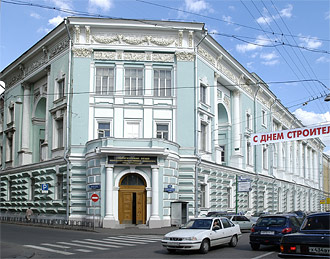|
 Moscow University's Zoological Museum is one of the ten largest of its kind in the world and, although there's nothing particularly imaginative or engaging about the way the presentation of the exhibits, there's plenty here of interest to the expert and the layman.
Moscow University's Zoological Museum is one of the ten largest of its kind in the world and, although there's nothing particularly imaginative or engaging about the way the presentation of the exhibits, there's plenty here of interest to the expert and the layman.
For the specialists among you, the museum houses a rare collection of land and sea invertebrates collected by the German naturalist Karl Semper at the end of the 19th century in the Philippines and until recently thought lost. Most extensive are the entomological collection and the collections of mammals and birds.
The lower hall contains invertebrates, fish, amphibians and reptiles, while the more popular upper hall houses the birds and mammals. There are such unique specimens as the full skeleton of a Steller's sea cow, an unfortunately docile and unsuspecting sea mammal that once lived off the coasts of Kamchatka, and a stuffed wandering pigeon. Both species were hunted to extinction in Russia more than 200 years ago. Among the most popular exhibits are the collection of large, brightly-coloured tropical butterflies, the fine collection of century-old vertebrate skeletons, including the extraordinary skeleton of a humming bird - a masterpiece of reconstruction. The two stuffed giant pandas may, of course, seem a little ominous.
Several of the animals are displayed in their "natural habitat", there is a large collection of art by the best Russian animal painters, and the museum constantly mounts interesting exhibitions.
Opening hours: Tuesday to Sunday - 10:00 to 17:00. Monday - closed. The museum is closed on the last Tuesday of each month.
|

 Moscow University's Zoological Museum is one of the ten largest of its kind in the world and, although there's nothing particularly imaginative or engaging about the way the presentation of the exhibits, there's plenty here of interest to the expert and the layman.
Moscow University's Zoological Museum is one of the ten largest of its kind in the world and, although there's nothing particularly imaginative or engaging about the way the presentation of the exhibits, there's plenty here of interest to the expert and the layman.